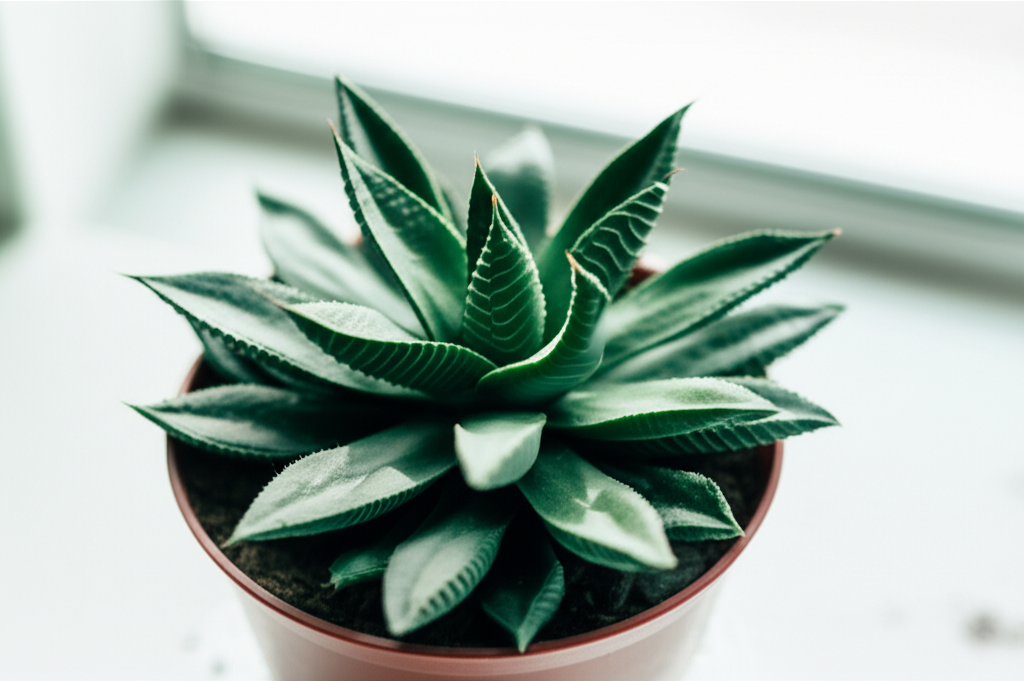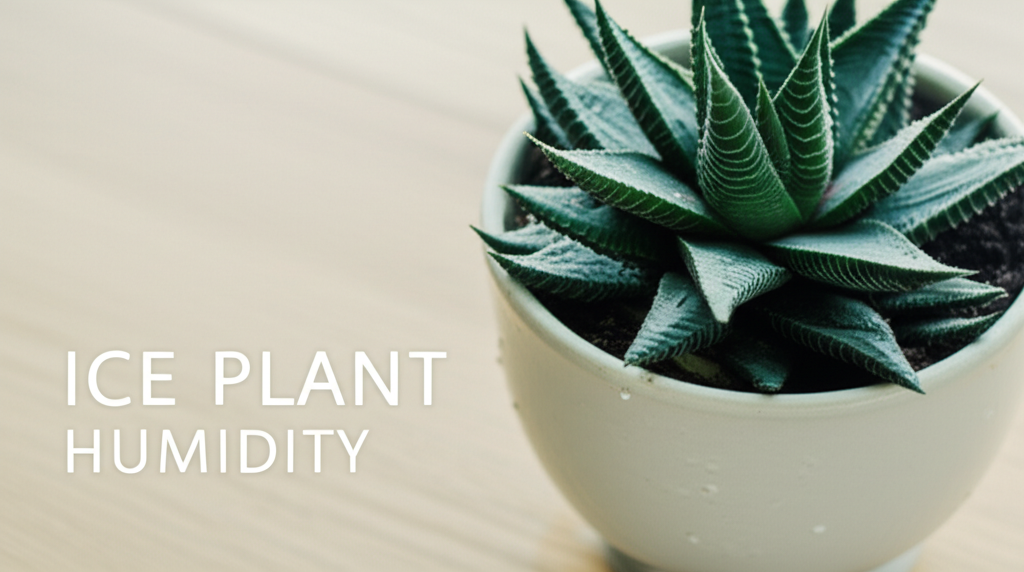Introduction: The Unexpected Role of the Ice Plant Succulent in Your Home’s Climate
In the quest for a healthier and more comfortable living environment, indoor air quality often takes center stage. We focus on air purifiers, humidifiers, and dehumidifiers, but rarely consider the subtle yet significant impact of our houseplants. Among these green companions, the Ice Plant succulent ( Delosperma cooperi and related species) emerges as a surprisingly effective, albeit unconventional, player in managing indoor air humidity. Known for its vibrant, daisy-like flowers and succulent leaves that glisten as if covered in frost, this resilient plant offers more than just aesthetic appeal. This article will delve into the fascinating relationship between the Ice Plant succulent and indoor humidity, exploring its mechanisms, benefits, and practical considerations for integrating it into your home.
Understanding Indoor Air Humidity and Its Importance

Before we explore the Ice Plant’s role, it’s crucial to understand why indoor air humidity matters. Humidity refers to the amount of water vapor present in the air. The ideal indoor humidity level typically ranges from 30% to 50%. Deviations from this range can lead to a variety of issues:
- Low Humidity (Below 30%): Can cause dry skin, chapped lips, irritated sinuses and throat, static electricity, and can exacerbate respiratory conditions like asthma. Wooden furniture and musical instruments can also be damaged.
- High Humidity (Above 50%): Creates an environment conducive to mold and mildew growth, dust mites, and other allergens. This can trigger allergies and respiratory problems, and lead to musty odors and damage to home structures.
Maintaining a balanced humidity level is therefore essential for both our health and the preservation of our homes.
The Ice Plant Succulent: A Biological Marvel
The Ice Plant succulent, belonging to the Aizoaceae family, is native to South Africa. Its most distinctive feature is its epidermal cells, which are enlarged and transparent, often filled with water. These specialized cells, called bladder cells or papillae, give the plant its characteristic “icy” or “dewy” appearance. This unique structure plays a pivotal role in the plant’s interaction with its environment, including its ability to influence humidity.
How Ice Plants Interact with Humidity: Transpiration and Water Storage
Plants, in general, influence humidity through a process called transpiration, where water is absorbed by the roots, transported through the plant, and released as vapor through tiny pores called stomata, primarily on the leaves. The Ice Plant, with its succulent nature, has evolved specific mechanisms for water management:
- Water Storage: The enlarged bladder cells within the Ice Plant’s leaves allow it to store significant amounts of water. This water acts as a reservoir, which can be gradually released back into the atmosphere through transpiration.
- CAM Photosynthesis: Many succulents, including some Ice Plants, utilize Crassulacean Acid Metabolism (CAM) photosynthesis. This allows them to open their stomata at night to take in carbon dioxide and minimize water loss during the hot, dry days by keeping stomata closed. While this is primarily an adaptation for arid environments, the continuous, albeit slow, release of water vapor throughout the day and night can contribute to ambient humidity.
- Surface Area and Evaporation: The succulent leaves, with their often fleshy and broad surfaces, offer a relatively large area for slow evaporation. Even without active transpiration, ambient moisture can be held on and slowly released from the leaf surface.
The Ice Plant Succulent as a Natural Humidity Regulator
While not a primary humidifier or dehumidifier in the traditional sense, the Ice Plant succulent can contribute to a more stable indoor humidity environment through its inherent biological processes.
Benefits of Ice Plants for Indoor Humidity Management
Integrating Ice Plant succulents into your home can offer several subtle yet beneficial impacts on indoor air humidity:
- Gentle Humidification: In drier environments, the gradual release of water vapor from the plant’s leaves through transpiration can provide a gentle, natural humidifying effect. This is particularly beneficial during dry winter months when heating systems tend to deplete indoor moisture.
- Buffering Fluctuations: The plant’s ability to store water means it can absorb excess moisture from the air during periods of higher humidity and release it when the air becomes drier, acting as a natural buffer.
- Aesthetic and Psychological Benefits: Beyond its physiological impact, the presence of greenery has well-documented psychological benefits, reducing stress and improving mood, which can indirectly contribute to a more comfortable living space.
Key Facts Comparison: Ice Plant vs. Other Humidity-Influencing Factors
To put the Ice Plant’s contribution into perspective, let’s compare it with other common indoor humidity factors.
| Factor/Plant | Primary Mechanism | Humidity Impact | Considerations |
|---|---|---|---|
| Ice Plant Succulent | Transpiration, water storage, slow evaporation | Gentle, natural humidification, buffering | Requires adequate light, infrequent watering, adaptable to various conditions |
| Commercial Humidifier | Mechanical water dispersion (evaporative, ultrasonic) | Significant, controllable humidification | Requires electricity, regular cleaning to prevent mold, can over-humidify |
| Boiling Water/Steaming | Rapid water vaporization | Rapid, localized humidification | Energy-intensive, potential safety hazard, temporary effect |
| Dehumidifier | Mechanical moisture extraction | Significant, controllable dehumidification | Requires electricity, needs emptying, can over-dry air |
| Indoor Plants (General) | Transpiration | Minor to moderate humidification, varies by plant type and size | Light and care requirements vary, can harbor dust and allergens |
As the table illustrates, the Ice Plant’s role in humidity management is subtle and complementary rather than a direct replacement for dedicated appliances.
Cultivating Ice Plant Succulents for Optimal Performance
To harness the humidity-influencing potential of your Ice Plant, proper care is essential. Their needs are generally straightforward, making them excellent choices for beginners.
Essential Growing Conditions
- Light: Ice Plants thrive in full sun to partial shade. Indoors, place them in a south-facing or west-facing window where they can receive at least 6 hours of bright, indirect sunlight daily. Insufficient light can lead to leggy growth and reduced vigor.
- Soil: A well-draining potting mix is crucial. A cactus or succulent mix is ideal. You can also create your own by mixing potting soil with perlite or coarse sand.
- Watering: Overwatering is the most common mistake. Allow the soil to dry out completely between waterings. Water thoroughly until water drains from the bottom of the pot. Reduce watering significantly in winter.
- Temperature: Ice Plants prefer warm temperatures, ideally between 65-80°F (18-27°C) during the day and slightly cooler at night. They can tolerate some fluctuation but avoid prolonged exposure to temperatures below 50°F (10°C).
- Potting: Choose pots with drainage holes. Terracotta pots are excellent as they allow the soil to dry out more quickly.
Tips for Maximizing Humidity Contribution
While the plant naturally affects humidity, a few practices can subtly enhance this effect:
- Grouping Plants: Placing several Ice Plants together, or grouping them with other humidity-loving plants, can create a microclimate with slightly higher humidity through combined transpiration.
- Misting (with caution): While Ice Plants generally prefer dry conditions, a light misting on very hot, dry days can provide a temporary boost in atmospheric moisture and add to their “icy” appearance. However, avoid over-misting, as it can promote fungal issues. Ensure good air circulation if you mist.
- Adequate Light: As mentioned, sufficient light is key for healthy growth and robust transpiration.
When to Consider Ice Plants for Humidity Management
Ice Plant succulents are best suited for specific scenarios where a gentle, natural adjustment of humidity is desired.
Ideal Scenarios for Ice Plant Integration
- Mildly Dry Indoor Environments: If your home is consistently only slightly below the ideal humidity range (e.g., 25-30%), a few Ice Plants can help nudge it closer to the target without the risk of over-humidification associated with mechanical devices.
- Supplementing Other Methods: They can act as a natural complement to humidifiers or dehumidifiers, providing a more stable baseline humidity.
- Aesthetically Pleasing Solution: For those who prefer natural solutions and enjoy the beauty of plants, Ice Plants offer an attractive way to contribute to a more comfortable environment.
- Low-Maintenance Approach: If you are looking for a low-effort way to potentially influence your home’s humidity, the resilient nature of the Ice Plant makes it an excellent choice.
Limitations and Considerations
It is important to manage expectations regarding the Ice Plant’s capacity to regulate humidity.
Understanding the Plant’s Limits
| Pros | Cons |
|---|---|
| Natural and aesthetically pleasing | Limited impact compared to mechanical devices |
| Low maintenance | Requires adequate light |
| Contributes to overall well-being | Can still be susceptible to overwatering if care is not taken |
| Helps buffer minor humidity fluctuations | Not a solution for extreme dryness or dampness |
| Adds visual interest and color | May not be suitable for very low-light environments |
When Ice Plants Might Not Be Enough
For homes experiencing significant humidity problems, such as persistent dryness due to aggressive heating or excessive dampness leading to mold growth, relying solely on houseplants like the Ice Plant will likely be insufficient. In these cases, dedicated humidifiers or dehumidifiers are necessary.
Conclusion: A Natural Touch for a Balanced Atmosphere
The Ice Plant succulent offers a unique and understated contribution to managing indoor air humidity. While not a replacement for mechanical appliances, its ability to store and gradually release water, coupled with its resilient nature and visual appeal, makes it a valuable addition to any home seeking a more balanced and pleasant atmosphere. By understanding its biological mechanisms and providing the right care, you can leverage the subtle power of the Ice Plant to enhance your living environment, one glistening leaf at a time. Embrace this South African gem and discover how a touch of nature can contribute to a healthier, more comfortable home.


